10 Most Dangerous Birds in the World (With Pictures)
Last Updated on
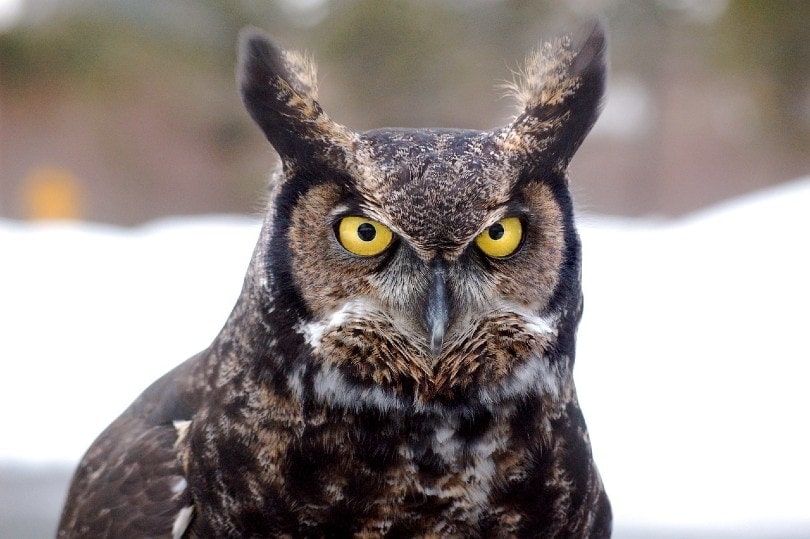
When we think of dangerous birds, what is the first thing that comes to mind? Maybe you don’t think of a giant pterodactyl chasing you down—but you might think of birds of prey or even large fowl. Interestingly, some birds can pose huge risks despite their size.
Other birds are simply dangerous in other ways you might not think of. Let’s get to know these remarkable winged creatures and why they made our top 10 most dangerous birds in the world.

The 10 Most Dangerous Birds in the World
1. Cassowary
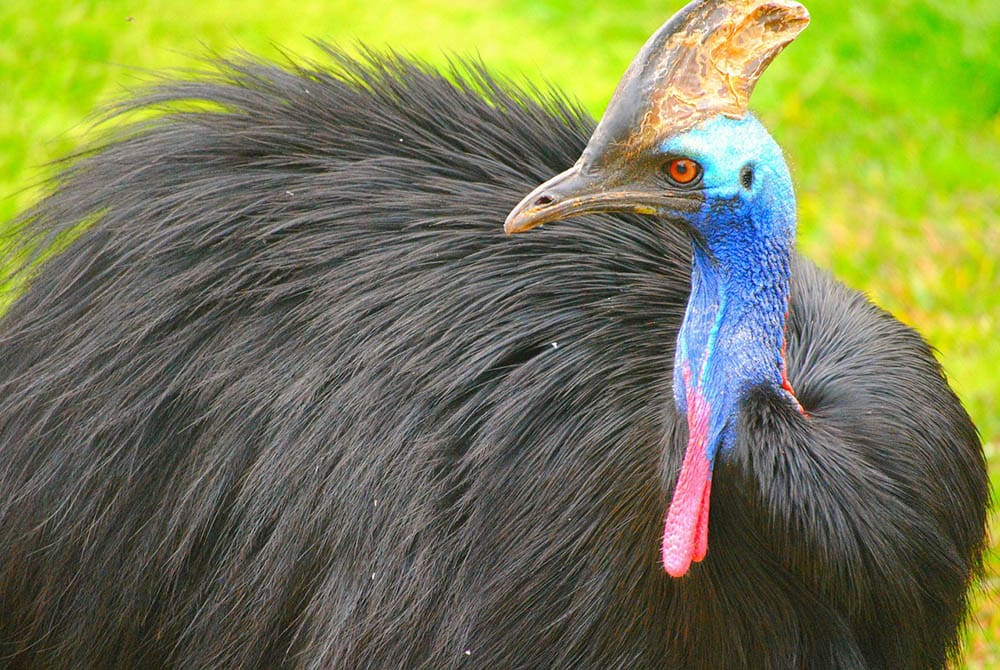
| Scientific Name: | Casuarius |
| Continent of Origin: | Australia |
| Weight: | 121-167 pounds |
| Height: | 5.8 feet |
The colorful-faced cassowary is a large flightless bird that is a marvel to behold. They are the heaviest bird in Australia—and only second in the world to the ostrich.
These jet black-bodied birds are separated into three different variations. Females are larger and generally more colorful than their male counterparts. These birds have what is called a casque on their head which is a thick layer of keratin (what our fingernails are made of).
While they are gorgeous without question, they are the most dangerous bird to humans. It won’t be much of a surprise to you once you spot the daggers on the inner part of their leg. Much like a rooster, they have a defense mechanism to kick and slice potential threats.
Even though that can be quite deadly if you get too close, it serves them well in the wild.
2. Ostrich

| Scientific Name: | Struthio camelus |
| Continent of Origin: | Africa |
| Weight: | 140-320 pounds |
| Height: | 6.9-9 feet |
Introducing the largest bird in the world: the ostrich. These big guys are incredible runners originating in Africa. What they lack in flight, they make up for with great speed. They can run short bursts up to 43 miles per hour—so it’s no contest if the two of you were in a race.
These birds have powerful legs, as you could guess from all that exercise. Rather than having tight, coarse feathers, ostriches have light, fluffy feathers that are soft to the touch giving them a classic shaggy look. Their feathers are not waterproof like most birds, so they can get drenched.
There is a popular myth that when an ostrich is scared, it buries its head in the sand. While it might look like that from a distance, it is actually not true. They simply stretch out on the ground as a form of camouflage.
However, when it comes to fit or flight, these birds can deliver a powerful kick strong enough to kill a lion—so they’re not messing around.
3. Emu
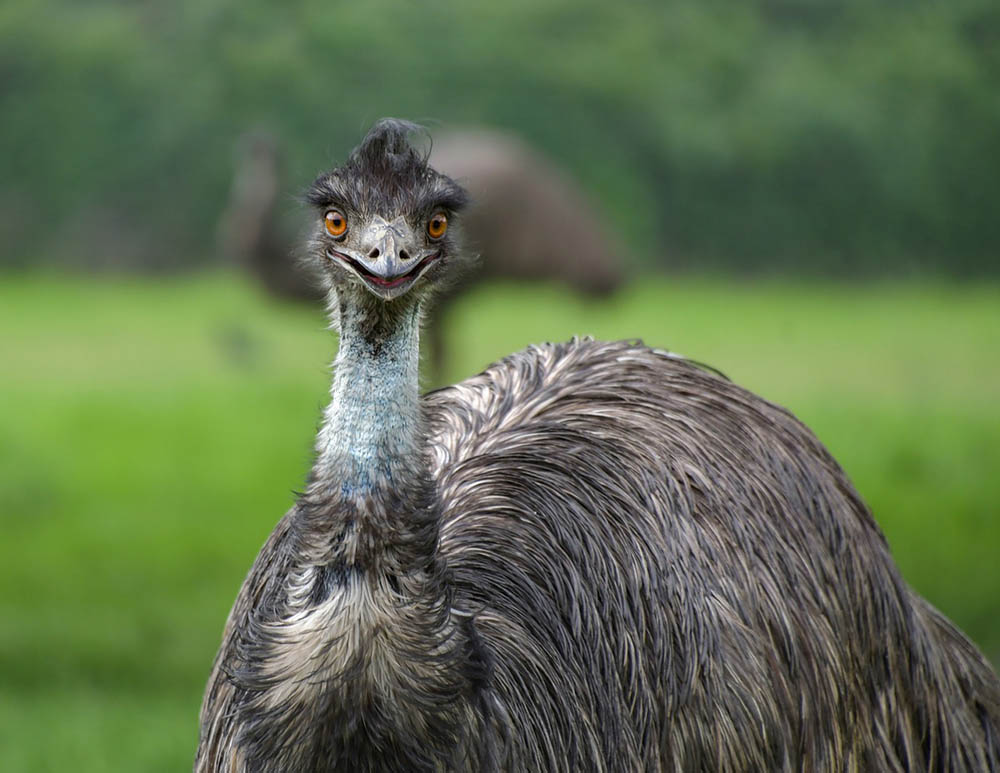
| Scientific Name: | Dromaius novaehollandiae |
| Continent of Origin: | Australia |
| Weight: | 79-88 pounds |
| Height: | 5.7-6 feet |
The emu is the second-largest bird in the world, but not the second heaviest (that award goes to the cassowary, as we mentioned earlier in the article.) Looking remarkably similar to their ostrich cousins, these fluffy, flightless birds pack a punch.
They, too, have long, powerful legs with three forward-facing toes that allow them to propel forward at great speeds. An adult emu can run up to 30 miles per hour at full speed. Their fluffy body feathers serve as a natural sunscreen or added layer of protection.
Like the first two birds mentioned, the emu wards off predators by kicking them with full force. They also have quite sassy attitudes in captivity and can be quite dangerous if not handled properly.
4. Lammergeier

| Scientific Name: | Gypaetus barbatus |
| Continent of Origin: | Asia, Africa |
| Weight: | 13 pounds |
| Height: | 40 inches |
One look at the lammergeier might be enough to scare the socks off you—and in this case, looks aren’t deceiving. These large birds look a lot like an eagle but shaggier and more sinister. They tend to dine on carrion and bones, so they aren’t much of a threat to living creatures, but there’s a twist.
These birds carry a name that translates to “lamb vulture.” And why, you ask? Because these birds are large enough to carry off livestock and even small children. Thankfully, the likelihood of that happening is slim to none as these vultures prefer dead things.
What could hurt you is if you’re walking in their territory, you might get something dropped on your head. Often these birds will take bones to heights capable of breaking them and drop them onto the ground.
So, if you’re unfortunate enough to be beneath it, it could definitely do some damage. The chances of that happening are about as much as getting struck by lightning. So, it might be safe to say that you’re safe from the lammergeier.
5. Great Horned Owl

| Scientific Name: | Bubo virginianus |
| Continent of Origin: | North America |
| Weight: | 3.2 pounds |
| Height: | 24 inches |
While the stunningly impressive great horned owl is a fierce hunter, they aren’t much of a threat to humans. While rare, there are some cases where an owl might attack a hiker or walker if they got close to a nest.
These fearsome creatures can be a real threat to house pets if you live in the country. Small breed dogs and cats can be easy targets for these large birds. Owl injuries can be extremely hard to treat since they have such an intense grip.
Luckily, most dogs and cats are indoors or seek shelter at night—so this possibility is pretty rare. But if the owl had that opportunity, they would likely strike. However, their main source of food consists of squirrels, opossums, geese, hawks, snakes, and frogs.
6. Red-Tailed Hawk
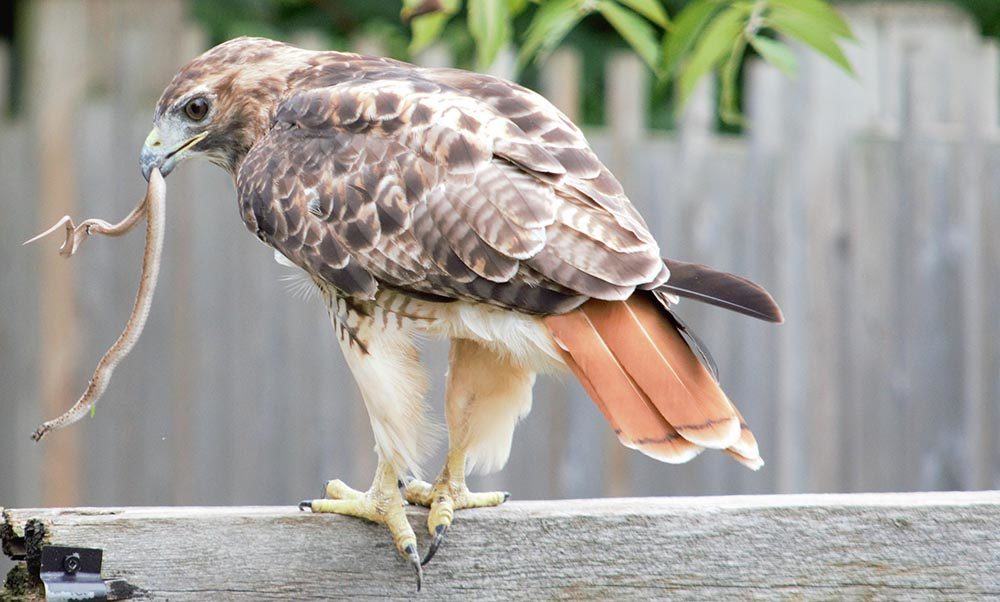
| Scientific Name: | Buteo jamaicensis |
| Continent of Origin: | North America |
| Weight: | 2.4 pounds |
| Height: | 18-26 inches |
The red-tailed hawk is a vicious, relentless hunter in the wild. Often, it will snatch prey before they even realize it’s happening. Though hawks aren’t necessarily dangerous to people, they can be dangerous to smaller animals, like chickens.
Red-tailed hawks hunt in daytime hours but blend in extremely well with the natural elements. These efficient flyers are incredibly fast with their targeting. They have impressively strong talons where they topple and grasp their prey.
Red-tailed hawks are daylight hunters with sharp eyesight and precise flight. Interestingly, while this hawk will eat a series of smaller rodents and reptiles, they also might eat carrion if they’re hungry enough.
There are falconry groups that legally own and fly hawks for sport. These hawks will fly out to hunt, bringing back their kill. You must go through special training with a mentor before acquiring a license.
7. Great Northern Loon
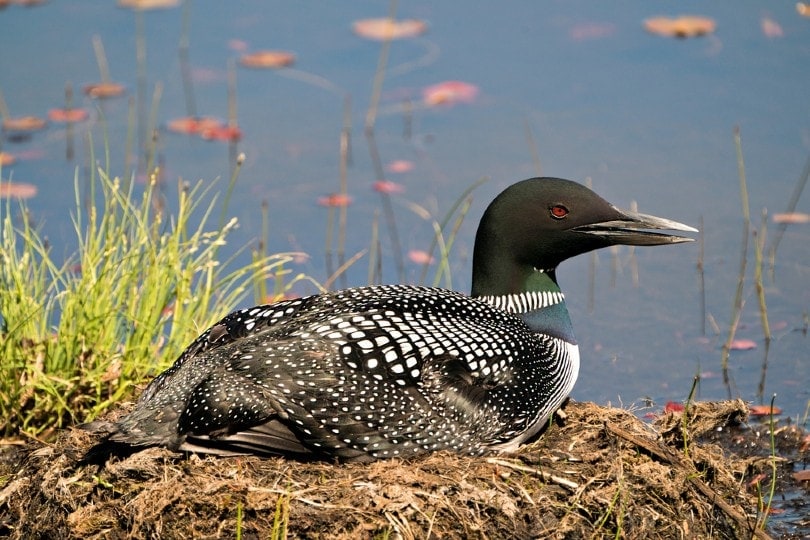
| Scientific Name: | Gavia immer |
| Continent of Origin: | Europe |
| Weight: | 3.5-18 pounds |
| Height: | 27-36 inches |
The great northern loon is part of a family of diver birds. These beautiful waterfowl have interesting spotted patterns with dark heads and red eyes.
These birds might look harmless, but they can actually get quite aggressive during nesting season. Since their beaks can shred and tear, they can cause some damage if you happen upon their eggs. If they feel threatened, they will quite literally use their beak as a sword, stabbing the predator.
Even scarier, they tend to target the head, neck, and eyes. So, your best bet is to stay as far away from them as you can during nesting season. They typically nest on lake shorelines, so be mindful between May and late June.
8. Mute Swan
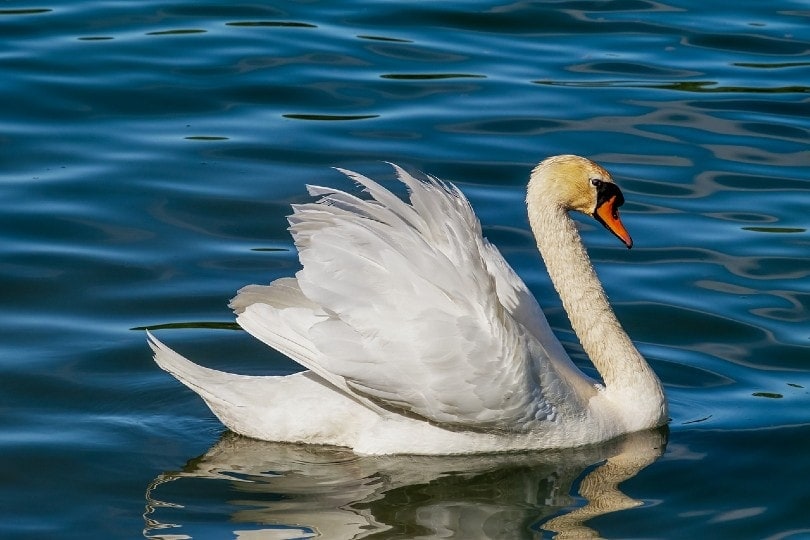
| Scientific Name: | Cygnus olor |
| Continent of Origin: | North America |
| Weight: | 19-26 pounds |
| Height: | 47 inches |
Mute swans are one of the largest waterfowl, weighing up to 26 pounds. These birds are notorious for mating in lifelong pairs and swimming gracefully. These beautiful creatures might look quite peaceful on the water, but they don’t take any threats lightly. They are known to be the most aggressive waterfowl.
Swans will be complacent as long as nothing threatens their territory. These hostile birds drive out nearly all nearby critters when it comes time to mate, nest, and raise their young. They even chase native birds from their nests to make the space solitary while they occupy it.
Even though swans can be very cantankerous if you disturb them, you can avoid this behavior altogether by steering clear of nesting sites. These graceful creatures can be lovely to kick back and watch, but it’s best to keep your distance.
9. Australian Magpie

| Scientific Name: | Gymnorhina tibicen |
| Continent of Origin: | Australia |
| Weight: | 708-12.3 ounces |
| Height: | 14.5-17 inches |
The Australian magpie is a medium-sized passerine that is black and white. They look very similar to the American crow and raven. But don’t let their good looks fool you—these birds are fiercely territorial with reports of attacks every year.
When any perceived threat is around their nesting area, they will try to “swoop” at the intruder. If they can, they will continue this behavior, getting more aggressive each time. It is so commonplace in Australia, they refer to their nesting season as “swooping season.”
Tragically, magpie swooping led to the death of a five-month-old baby in Australia at the end of summer. The magpie caused the baby’s mother to trip and fall, dropping her. Though the baby was rushed to the hospital, she passed away shortly thereafter.
So, while it might not be correct to say magpies kill humans, they can pose hazards and risks of infection.
10. European Herring Gull
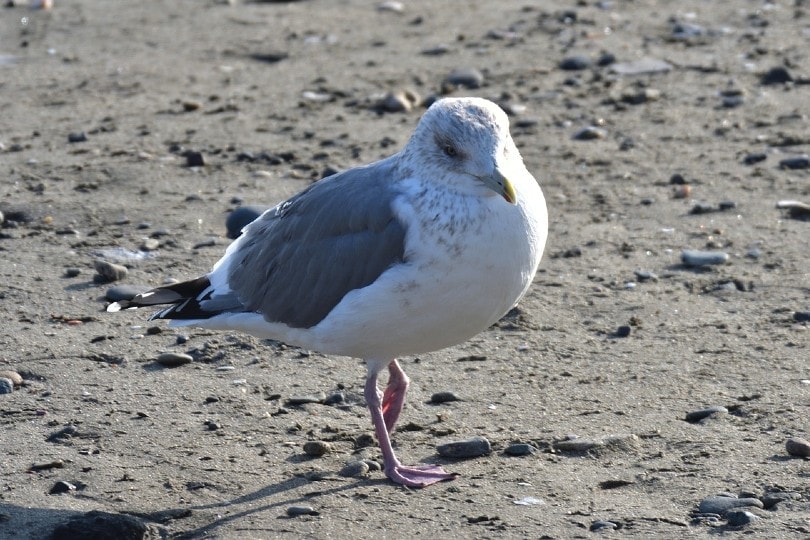
| Scientific Name: | Larus argentatus |
| Continent of Origin: | Europe |
| Weight: | 1.6-2.4 pounds |
| Height: | 24-26 inches |
The European herring gull may remind you of the beach at first glance, these birds can get quite testy during nesting season. These birds span across the coastlines of Europe, laying eggs on beaches. They tend to gather in pairs that mate for life.
When eggs are incubating, males vehemently protect the area, looking out for any potential threat that might be lurking. They are so territorial that they will even sometimes kill unknown chicks of their own kind. They have even been known to attack dogs at the beach.
Even though they might be a little frisky when protecting their young, they’re otherwise curious birds. They like to steal food you dropped on the beaches and nose about to see if you have anything to offer up.

In Conclusion
When we think of dangerous animals, birds might not even strike our radar at first. However, when you really start looking at all of the powerful, fierce different species, some of these birds mean business.
Even if it seems like some of these birds are bullies, they only do what nature intended.
See also:
About the Author Ashley Bates
Ashley Bates is animal writer and enthusiast who is currently studying the art of animal therapy. A mother to four human children— and 23 furry and feathery kids, too – Ashley volunteers at local shelters, advocates for animal well-being, and rescues every creature she finds. Ashley's mission is to create awareness and education about animals of all shapes and sizes to promote proper care and respect.
Related Articles:
Monocular vs Telescope: Differences Explained (With Pictures)
10 Types of Hummingbirds in Arkansas (With Pictures)
8 Types of Hummingbirds in Nebraska (With Pictures)
5 Types of Hummingbirds in Idaho (With Pictures)
3 Types of Hummingbirds in Mississippi (With Pictures)
8 Types of Hummingbirds in Kansas (With Pictures)
5 Types of Hummingbirds in West Virginia (With Pictures)
5 Types of Hummingbirds in Ohio (With Pictures)
